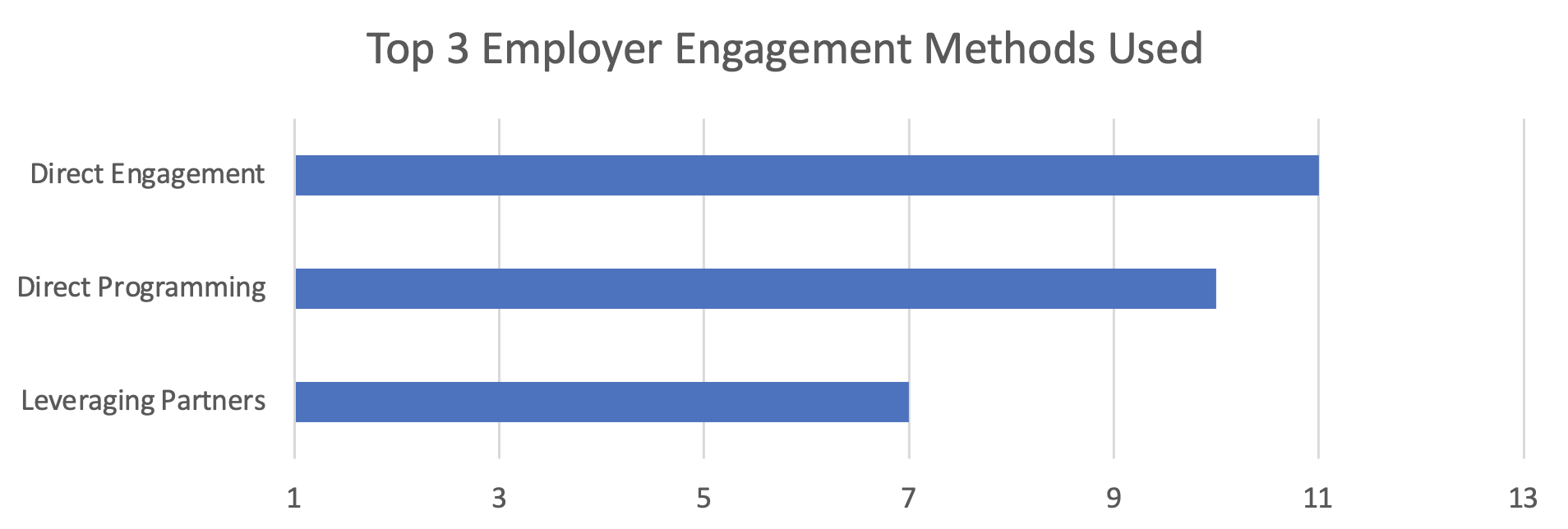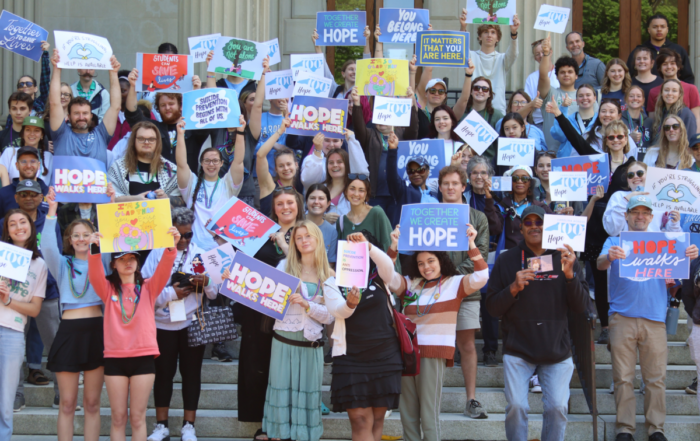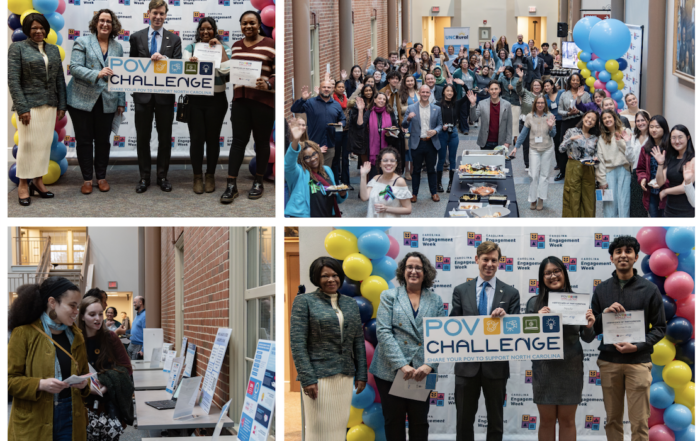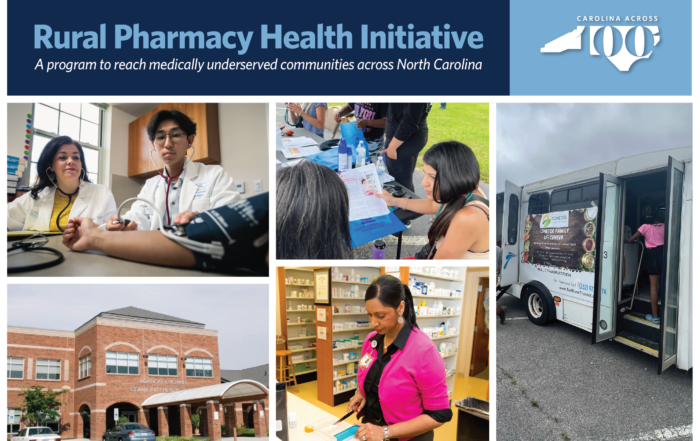Education | Employment
Forming Partnerships to Re-engage Opportunity Youth
Why it's important to include employers
August 16, 2023
By Rick Brown and Abigail Holdsclaw

By definition, Opportunity Youth are young adults between the ages of 16-24 who are out of school and work. Opportunity Youth are sometimes referred to as “disconnected” because they are not currently connected to an educational institution or an employer.
Opportunity Youth are more likely than their peers to be in poverty, disabled, married and/or have children, living apart from both parents, living in institutionalized group quarters, homeless, and/or uninsured. They are also more likely to face difficulties meeting their basic needs such as food, housing, and healthcare. Many Opportunity Youth also struggle with a lack of access to reliable internet, safe and affordable transportation, and high-quality, affordable childcare.
For these reasons and more, completing school and staying connected to work is difficult for these young people. The disruptions to school and work brought upon by the pandemic, which disproportionately affected young people, only exacerbated these challenges.
Employers are an essential part of the efforts to reduce the number and rate of Opportunity Youth in NC. By understanding the challenges this population faces to stay connected to work and responding appropriately, employers can both:
- 1
Meet their needs of filling job openings
- 2
Provide a chance for these young people to achieve their personal and professional goals.
A Shift
The role of youth-serving community groups such as workforce development boards, community colleges, and nonprofits is to be the connective tissue between the needs of local employers searching for workers, and the needs of young people looking to be prepared for work.
By reaching out to employers, explaining the organization’s mission and goals, forming partnerships, and even co-creating training and apprenticeship opportunities, all parties stand to benefit.
Employer Engagement Check-ins
As part of the ongoing supports offered by the “Our State, Our Work” program, the Carolina Acrosss 100 team met one-on-one with each of the 13 collaborative teams representing 37 counties across North Carolina. The teams represent a wide range of communities ranging from urban to rural, with large and small employers and varying local economic conditions.
To better understand each team’s existing efforts to engage with local employers, we created an Employer Engagement Assessment Tool to assess:
The visits closed with a discussion of the team’s next steps to engage employers to connect them to both the teams’ work and Opportunity Youth pursuing meaningful employment opportunities. The teams felt confident in their ability to engage with employers, and most employers are interested in ways to attract employees.
To assist with their employer engagement planning and strategy of outreach we provided an . The toolbox is a directory of resources to help the teams more deeply engage with employers and develop plans and strategies to meet their numeric goal of reaching 6,400 Opportunity Youth by 2025. Specifically, the toolkit included five examples of resource guides containing strategies and approaches to develop an effective employer engagement plan.
How were they structured?
We followed a uniform set of questions in the assessment tool so that similar data was collected across teams. Due to the geographic span of the 13 teams, the 90-minute meetings were conducted virtually via Zoom calls. The discussions were held with each team’s Project Manager and additional members of their team of their choice.
The teams were then asked to provide follow-up information in the following 30 days that summarized their progress towards the goals set during the virtual check-ins.
What were the results of the conversations?
Generally, all 13 teams felt confident about their efforts to engage with employers. On a scale of 1-4, with 4 being the strongest level of agreement, the teams reported, on average, the following levels of agreement.
The teams shared that there are many factors that contribute to why a youth is not in school or at work.
- Young adults lost valuable time to work towards their educational and career goals during the pandemic.
- Many are experiencing significant changes in their social life and are struggling with mental health issues such as fear and anxiety. This has greatly impacted their ability to engage with employers, thereby making it more difficult for them to enter or re-enter the workforce.
- Employers are eager to train employees in technical skills but are less prepared to provide necessary soft skills training, but that is shifting with more employers.
The teams have found that the pandemic has been a game changer for employers with challenges ranging from supply chain issues to the loss of employees due to a radically changed workforce.
- This disruption in the workforce has not been remedied and the effects of the pandemic continue and have kept Opportunity Youth disengaged without some form of intervention or assistance.
- There was consensus that it is harder to find and attract Opportunity Youth to the organizations’ work and mission than it is to attract employers.
- The development and growth of entry points to employment through community colleges, trade qualifications, non-degree certificate or job training, apprenticeships and internships are vital to making those connections between Opportunity Youth and employers.
- Employers are most successful in their hiring when they are more creative — finding new methods to attract, train, and retain young workers. Many are willing to explore new methods for attracting potential employees.
To learn more about the various perspectives of employers, employment service providers, and young people on the labor market, see this summary of the focus groups conducted by ncIMPACT and NC Growth.
What were the 3 most common goals when engaging with employers?
- 1
Establish and grow relationships with employers through events, programming and direct outreach (6 teams).
- 2
Focus on and grow existing programs and grow new programs to reach the needs of more employers (6 teams).
- 3
Restructure and refine current collaborative work groups and team structure to improve collaborative focus (5 teams).
What were the 3 most common methods of outreach?
The primary goal of the teams was to build employers’ awareness of the programs, resources, and funding in place to help them fill vacancies. Because employers are actively looking for resources to help with recruitment and fill open positions, this gives service providers an opportunity to present how advantageous partnerships can be to employers.
- 1
The most common method of outreach seems to be direct engagement with employers through public networking events, open houses, work site visits, career fairs, employer recognition, and informative materials (11 teams).
- 2
Development of direct programming such as apprenticeship programs, mentoring programs, and job training provide access to employers to grow relationships (10 teams).
- 3
Effectively leveraging partners from employment career counseling centers, workforce development agencies, community colleges and high schools, and pre-employability skills training organizations to build employer relationships. Partnerships with NCWorks, and use of funding from sources like WIOA provide resources to attract youth and employers (7 teams).

What are the takeaways?
Carolina Across 100 is a five-year initiative whose goal is to aid community-driven recovery and build sustainable efforts in all 100 counties by providing human resources, data insights, coaching, facilitation, coordination efforts, and program design.






